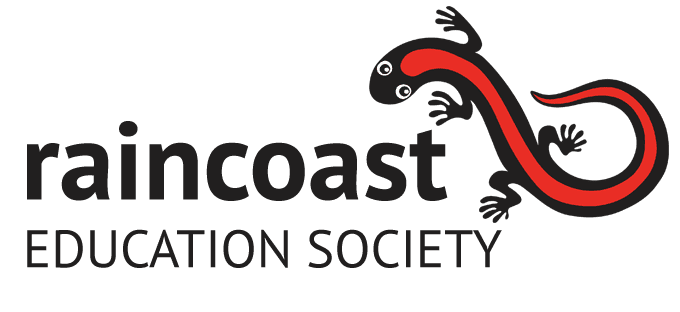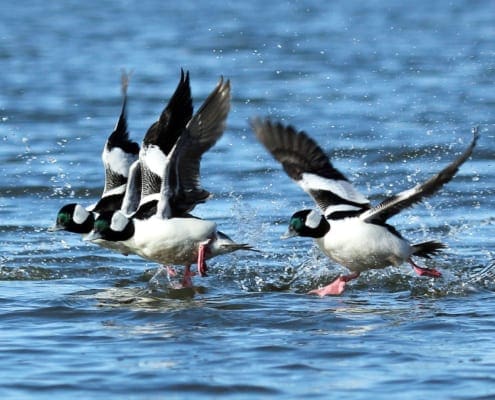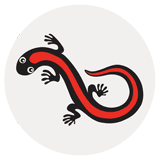Welcoming the Waterfowl
October 11, 2019 | Mark Maftei
If you’ve ever stopped to admire the view over Tofino Harbour, you’ve likely been drawn to the majestic peaks of Meares Island. But did you know, you are also looking at one of the most unique and ecologically important habitats on Vancouver Island? Compared to our exposed outer shores, the sheltered waters of Browning Passage and Lemmens Inlet are far less dynamic… but no less exciting. Much of what locals refer to as ‘the mudflats’ is actually part of the Tofino Mudflats Wildlife Management Area. The TMWMA, established in 1997, recognizes the mudflats’ importance as habitat for a wide variety of birdlife. Each spring and summer the mudflats serve as a stopover site used by regionally significant numbers of migrating shorebirds. Each winter the same area hosts large numbers of overwintering waterfowl. Along with the shortening days and dropping temperatures, one of the surest signs of fall is ducks and geese returning from their northern breeding grounds.
While winter in Tofino conjures up images of short, cold and rainy days for us humans, for waterfowl it’s a wonderful place to be! The weather is (relatively) mild, and the rain is hardly an inconvenience when you already spend your whole life in the ocean. The shallow waters and strong tides create ideal foraging opportunities and the extensive eelgrass meadows offer an all-you-can-eat buffet of tasty algae, rhizomes, snails, crustaceans and bite-sized fish. For dabblers like Mallards and Wigeon that cruise the edges of the eelgrass to divers like loons and grebes that actively chase down fish, the Tofino Mudflats are an ideal place to spend the non-breeding season.
While the Tofino Mudflats have long been recognized as an important area for waterfowl, there is surprisingly little information on historical trends. Population data for the TMWMA is necessary for the management of responsible and sustainable development of infrastructure along the TMWMA boundaries and economic activity like recreational and commercial fishing on the water. A solid baseline of population data can serve as a sign of what a healthy ecosystem looks like. In the case of waterfowl, these data are currently lacking. To date, the only attempt to systematically survey wintering populations of waterfowl is over 40 years old, and little has been done since! To address this knowledge gap, the Raincoast Education Society, with support from the West Coast Conservation Land Management Program and the Clayoquot Biosphere Trust, set out to conduct a three-year census. The census gathers data on the abundance and diversity of overwintering waterfowl within the TMWMA.
Every two weeks between November and April, Raincoast Education Society staff conduct a series of boat-based surveys, observing and recording every bird along a predetermined transect route. This project started in 2017, and we are currently in our third year of study. The data we have collected so far confirms that this area is critically important to significant numbers of waterfowl, particularly dabbling ducks like Mallards, American Wigeon and Bufflehead. We have also learned that Jensen’s Bay appears to be an important stop-over site used by Dusky Canada Geese, a distinct subspecies nesting only at a few sites in the Copper River Delta of Alaska and wintering in the Willamette Valley in Washington State. There are only about 11,000 Dusky Canada Geese in the world, and to better understand their movements, scientists in Alaska band a small number of birds every year with distinctive bright red plastic collars featuring a unique alphanumeric code in white. If you are ever out birding and notice a flash of red, take a second look and see if you can record the code. Report sightings to the Raincoast Education Society, who will pass info along to our colleagues in Alaska. A good place to scan for collared geese (and other waterfowl) is from the lookout platform at the end of Sharp Road.
If you see us zipping around on the water over the next several months and want to know more, don’t be afraid to wave us down! For more information on this ongoing project, waterfowl in general, or any of the other scientific research and monitoring the Raincoast Education Society is involved with, drop by our offices at the Tofino Botanical Gardens, or check out our website and social media feeds!
Written by Mark Maftei, Executive Director, Raincoast Education Society, published in the monthly Tofino Times
Photo credit: John West and the National Audubon society



